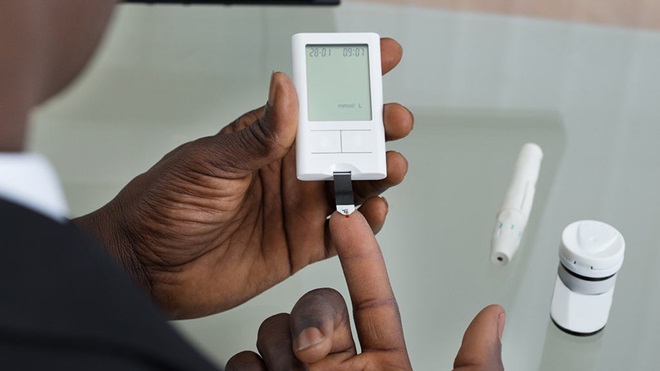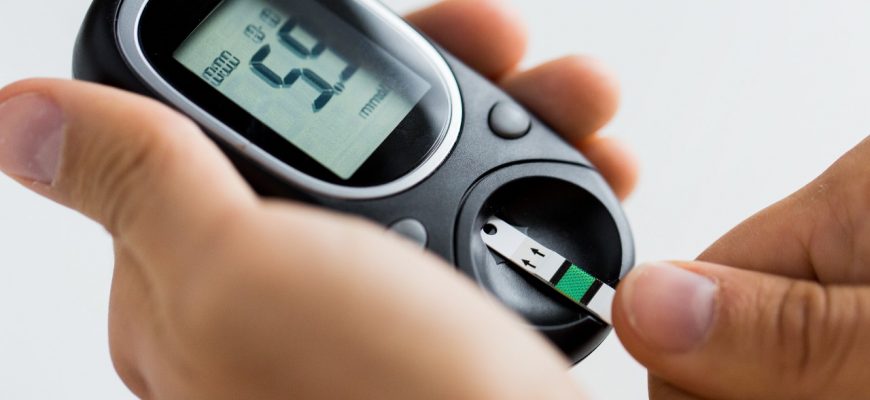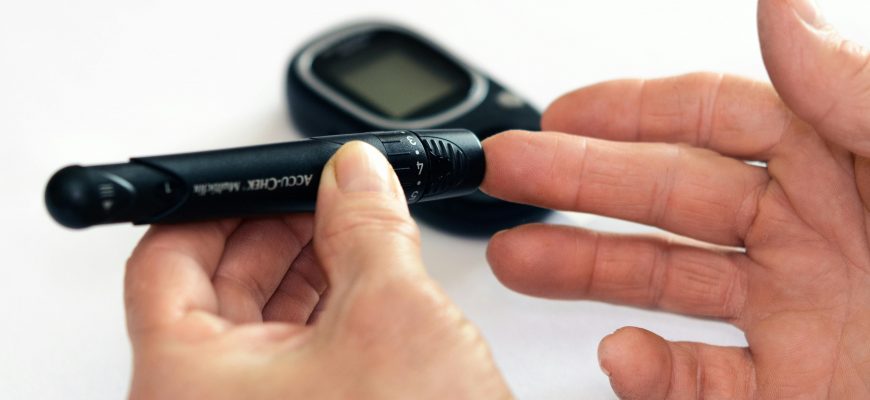How do financial considerations affect the choice of glucose monitors?

I. Introduction
In the vast landscape of diabetes management, where every decision carries weight, financial considerations often lurk in the shadows, casting an unspoken influence on the choices individuals make regarding their glucose monitoring devices. While the importance of accuracy, ease of use, and data management features in selecting a monitor cannot be overstated, the impact of financial factors is a lesser-explored facet that profoundly shapes the diabetes experience.
A. Setting the Stage: The Importance of Financial Considerations in Glucose Monitor Selection
For many individuals living with diabetes in Ontario and Saskatchewan, where healthcare systems vary in coverage and support, the financial burden of managing their condition looms large. Beyond the direct costs of medications and doctor visits, the recurring expenses associated with glucose monitoring can pose significant challenges. Understanding the intricacies of these financial implications is paramount for empowering patients to make informed decisions about their health.
B. Overview of Financial Factors Impacting Glucose Monitor Choice
While the notion of affordability may seem straightforward, the landscape of glucose monitoring devices introduces a nuanced interplay of costs, coverage, and long-term implications. From the initial investment in the device itself to the ongoing expenses of test strips and accessories, the financial considerations extend far beyond the surface. Moreover, the influence of insurance coverage, co-pays, and deductibles adds layers of complexity, shaping the accessibility of different monitoring options for individuals across diverse socioeconomic backgrounds.
In this article, we delve into the often-overlooked realm of financial considerations in glucose monitor selection, shedding light on the nuanced factors that influence decisions and offering insights to navigate this terrain with confidence. Through a lens focused on affordability, accessibility, and empowerment, we aim to equip individuals with the knowledge and resources needed to navigate the intersection of health and finance in diabetes management effectively.
II. Understanding the Financial Burden of Diabetes Management
Living with diabetes entails a multifaceted journey that extends beyond medical considerations to encompass financial realities that significantly impact individuals’ lives. In the provinces of Ontario and Saskatchewan, where healthcare systems play a pivotal role in providing support, the financial burden of managing diabetes is a pressing concern for many.
A. The Cost of Living with Diabetes
Beyond the direct expenses associated with medical treatments and supplies, individuals with diabetes face a myriad of indirect costs that often go unnoticed. From transportation to medical appointments to the time taken off work for managing the condition, the financial toll can be substantial. Moreover, the long-term implications of diabetes, such as complications and comorbidities, introduce additional financial strain on individuals and healthcare systems alike.
B. Financial Challenges Faced by Patients in Ontario and Saskatchewan
While both Ontario and Saskatchewan offer various support programs and insurance coverage options for diabetes management, navigating the system can be daunting for individuals, particularly those with limited financial resources. Disparities in access to healthcare services and resources further exacerbate the financial challenges faced by marginalized communities, amplifying the need for targeted interventions to address these disparities effectively.
C. The Role of Insurance Coverage and Out-of-Pocket Expenses
Insurance coverage plays a critical role in mitigating the financial burden of diabetes management, yet the extent of coverage and out-of-pocket expenses vary widely among different plans and providers. Understanding the intricacies of insurance policies, including deductibles, co-pays, and coverage limits, is essential for individuals to make informed decisions about their healthcare needs. Additionally, factors such as changes in employment status or shifts in insurance coverage can significantly impact individuals’ ability to afford essential diabetes supplies and medications.
In this section, we explore the complex landscape of financial challenges faced by individuals living with diabetes in Ontario and Saskatchewan, shedding light on the hidden costs and systemic barriers that shape their experiences. By understanding the interplay between financial considerations and diabetes management, we can better advocate for policies and interventions that prioritize affordability and accessibility for all.
III. Factors Influencing Glucose Monitor Selection
In the pursuit of effective diabetes management, the choice of a glucose monitoring device is a critical decision that is influenced by a myriad of factors, including financial considerations. Understanding how these factors intersect can empower individuals to make informed decisions that align with their health needs and financial circumstances.
A. Cost of the Device Itself
While the cost of the glucose monitoring device may seem like a straightforward consideration, it encompasses more than just the initial purchase price. Individuals must also consider factors such as warranties, durability, and the availability of replacement parts. Moreover, the long-term value proposition of the device, including its compatibility with future technologies and updates, adds another layer to the financial calculus.
B. Cost of Supplies and Accessories
Beyond the device itself, the ongoing expenses associated with supplies and accessories, such as test strips, lancets, and control solutions, play a significant role in the overall cost of glucose monitoring. The frequency of testing, individual testing habits, and the compatibility of the device with third-party supplies can all impact the affordability of maintaining a consistent monitoring regimen.
C. Long-term Maintenance Costs
In addition to the immediate costs of purchasing the device and supplies, individuals must also consider the long-term maintenance costs, including battery replacements, calibration requirements, and software updates. These hidden expenses can accumulate over time, influencing the overall affordability and sustainability of a particular glucose monitoring system.
D. Accessibility and Affordability of Test Strips
Test strips are a vital component of glucose monitoring, yet their accessibility and affordability can vary widely depending on factors such as insurance coverage, pharmacy pricing, and availability of generic alternatives. Individuals must weigh the cost-effectiveness of different test strip options while ensuring consistent and accurate monitoring to effectively manage their diabetes.
By examining the intricate interplay of these financial factors in glucose monitor selection, individuals can navigate the marketplace with confidence, choosing a monitoring system that meets their health needs while remaining within their budget constraints. Moreover, fostering awareness of affordable monitoring options and advocating for equitable access to essential diabetes supplies can help alleviate the financial burden faced by individuals living with diabetes in Ontario and Saskatchewan.
IV. Evaluating Cost-effectiveness vs. Features
In the realm of glucose monitoring devices, striking a balance between cost-effectiveness and essential features is a delicate yet essential endeavor for individuals managing diabetes. While the allure of cutting-edge technology and advanced features may be tempting, the financial implications of these choices cannot be overlooked. Here, we delve into the nuanced considerations of evaluating cost-effectiveness versus features in glucose monitor selection.
A. Balancing Affordability with Necessary Features
The quest for the perfect glucose monitoring device often involves a trade-off between affordability and functionality. While advanced features such as continuous glucose monitoring (CGM), smartphone connectivity, and data analysis capabilities may offer added convenience and insights, they often come with a higher price tag. Individuals must carefully assess their specific health needs and lifestyle preferences to determine which features are essential for effectively managing their diabetes while remaining within their budgetary constraints.
B. Assessing the Value Proposition of Different Glucose Monitoring Systems
Beyond the surface-level features, individuals must also consider the overall value proposition of different glucose monitoring systems. This includes factors such as reliability, accuracy, ease of use, and customer support services. While a more affordable device may offer basic functionality, it may lack the reliability and accuracy necessary for effective diabetes management. Conversely, a high-end device with all the bells and whistles may provide added convenience but may not necessarily translate into improved health outcomes.
C. Considering Long-term Savings and Investment in Health
In evaluating the cost-effectiveness of glucose monitoring devices, individuals must also consider the long-term savings and investment in health associated with their choice. While a more expensive device may require a larger upfront investment, it may offer cost-saving benefits in the form of reduced healthcare utilization, fewer complications, and improved quality of life. Moreover, investing in a reliable and accurate monitoring system can ultimately lead to better health outcomes and lower overall healthcare costs in the long run.
By adopting a holistic approach to evaluating cost-effectiveness versus features in glucose monitor selection, individuals can make informed decisions that prioritize both their financial well-being and their health. Moreover, fostering awareness of the long-term benefits of investing in reliable monitoring devices can empower individuals to make proactive choices that support their diabetes management journey in Ontario and Saskatchewan.
V. Affordable Glucose Monitoring Solutions
In the pursuit of effective diabetes management, affordability plays a pivotal role in ensuring access to essential monitoring tools for individuals living with diabetes in Ontario and Saskatchewan. While the market is saturated with a myriad of glucose monitoring devices, identifying truly affordable solutions that meet the needs of diverse individuals can be a daunting task. Here, we explore budget-friendly options and alternative approaches to glucose monitoring that prioritize accessibility and affordability without compromising on quality.
A. Exploring Budget-friendly Options on the Market
Despite the proliferation of high-tech glucose monitoring devices, there are several budget-friendly options available on the market that offer reliable and accurate results without breaking the bank. These devices may lack some of the bells and whistles of their more expensive counterparts but provide essential functionality at a fraction of the cost. By researching and comparing different brands and models, individuals can identify affordable options that align with their health needs and financial circumstances.
B. Comparing Different Brands and Models Based on Cost and Performance
When evaluating budget-friendly glucose monitoring solutions, individuals must consider not only the upfront cost of the device but also the long-term expenses associated with supplies and maintenance. By conducting a cost-benefit analysis of different brands and models, individuals can identify the most cost-effective option that meets their specific needs. Moreover, seeking feedback from other users and healthcare professionals can provide valuable insights into the performance and reliability of different devices.
C. Highlighting Alternative Monitoring Methods and Technologies
In addition to traditional glucose monitoring devices, there are several alternative methods and technologies available that offer affordable and accessible monitoring solutions for individuals living with diabetes. From smartphone apps that leverage built-in sensors to wearable devices that track glucose levels continuously, these innovative approaches provide real-time insights into blood sugar levels without the need for traditional fingerstick testing. By exploring these alternative monitoring methods, individuals can find solutions that fit seamlessly into their lifestyle while minimizing the financial burden of diabetes management.
By championing affordable glucose monitoring solutions and highlighting alternative approaches to traditional monitoring, we can empower individuals living with diabetes in Ontario and Saskatchewan to take control of their health without breaking the bank. Moreover, fostering awareness of these budget-friendly options can help alleviate the financial strain faced by individuals and promote equitable access to essential diabetes care resources.
VI. Managing Diabetes Expenses Wisely
Navigating the financial landscape of diabetes management requires a strategic approach that empowers individuals to make informed decisions while maximizing the value of their healthcare dollars. In Ontario and Saskatchewan, where healthcare systems vary in coverage and support, managing diabetes expenses wisely is essential for individuals to maintain optimal health outcomes without incurring unnecessary financial strain. Here, we explore practical strategies for budgeting, saving, and accessing support services to effectively manage diabetes expenses.
A. Tips for Budgeting and Saving on Diabetes Management Costs
Effective budgeting is a cornerstone of managing diabetes expenses, allowing individuals to allocate resources wisely while ensuring access to essential supplies and medications. Setting a budget for diabetes-related expenses, tracking spending habits, and prioritizing essential purchases can help individuals stay within their financial means while maintaining optimal health. Moreover, exploring cost-saving strategies such as purchasing supplies in bulk, utilizing generic alternatives, and taking advantage of manufacturer discounts can further stretch healthcare dollars and reduce out-of-pocket expenses.
B. Leveraging Insurance Benefits and Coverage Options
Understanding insurance benefits and coverage options is crucial for maximizing healthcare savings and minimizing out-of-pocket expenses. Individuals should familiarize themselves with their insurance plan’s coverage for diabetes supplies and medications, including co-pays, deductibles, and coverage limits. Moreover, exploring opportunities to optimize insurance benefits, such as enrolling in mail-order pharmacy programs or utilizing preferred pharmacy networks, can help individuals access essential diabetes care resources at a lower cost.
C. Utilizing Patient Assistance Programs and Support Services
In addition to insurance coverage, individuals living with diabetes in Ontario and Saskatchewan may be eligible for patient assistance programs and support services that provide financial assistance for diabetes-related expenses. These programs offer a range of benefits, including discounted or free medications, supplies, and healthcare services, to eligible individuals who demonstrate financial need. By exploring available resources and leveraging patient assistance programs, individuals can access essential diabetes care resources while minimizing financial hardship.
By adopting a proactive approach to managing diabetes expenses and leveraging available resources effectively, individuals can navigate the financial challenges of diabetes management with confidence and resilience. Moreover, fostering awareness of budgeting strategies, insurance benefits, and support services can empower individuals to take control of their financial well-being and prioritize their health in Ontario and Saskatchewan.
VII. The Importance of Education and Awareness
In the realm of diabetes management, education and awareness play a pivotal role in empowering individuals to make informed decisions about their health and finances. In Ontario and Saskatchewan, where individuals may face unique challenges related to healthcare access and affordability, fostering a culture of education and awareness is essential for promoting equitable access to essential diabetes care resources. Here, we explore the importance of education and awareness in navigating the intersection of financial considerations and diabetes management.
A. Empowering Patients with Knowledge about Financial Aspects of Diabetes Management
Education is a powerful tool for empowering individuals to navigate the complex landscape of diabetes management, including the financial aspects of their care. Providing individuals with comprehensive information about the costs associated with diabetes management, including the expenses of glucose monitoring devices, supplies, and medications, enables them to make informed decisions that align with their financial circumstances. Moreover, educating patients about available resources, such as insurance coverage options and patient assistance programs, equips them with the tools they need to access essential diabetes care resources affordably.
B. Advocating for Access to Affordable Healthcare Solutions
Advocacy plays a crucial role in promoting access to affordable healthcare solutions for individuals living with diabetes in Ontario and Saskatchewan. By raising awareness of the financial challenges faced by individuals with diabetes and advocating for policy changes that prioritize affordability and accessibility, healthcare professionals, advocacy organizations, and policymakers can work together to address systemic barriers and promote equitable access to essential diabetes care resources. Moreover, fostering partnerships between healthcare providers, community organizations, and government agencies can facilitate collaboration and coordination efforts aimed at improving access to affordable diabetes care for all individuals.
C. Promoting Financial Literacy in Diabetes Care
Financial literacy is an often-overlooked aspect of diabetes care that can have a profound impact on individuals’ ability to effectively manage their condition. By promoting financial literacy among individuals living with diabetes, healthcare providers can empower them to make informed decisions about their healthcare spending, budgeting, and savings strategies. Additionally, providing resources and support for financial planning and management can help individuals navigate the financial challenges associated with diabetes management and achieve better health outcomes in the long term.
By emphasizing the importance of education, advocacy, and financial literacy in diabetes care, we can create a supportive environment that empowers individuals to take control of their health and finances in Ontario and Saskatchewan. Through collaborative efforts aimed at raising awareness, advocating for policy changes, and promoting financial literacy, we can work towards a future where all individuals have equitable access to affordable and effective diabetes care resources.
VIII. Conclusion
In the complex landscape of diabetes management, where health and finances intersect, the importance of making informed decisions cannot be overstated. For individuals living with diabetes in Ontario and Saskatchewan, navigating the myriad of financial considerations associated with glucose monitor selection is a daunting yet essential task. As experts in the field, it is our responsibility to provide guidance and support to empower individuals to make choices that prioritize both their health and financial well-being.
A. Summarizing the Impact of Financial Considerations on Glucose Monitor Selection
The journey of selecting a glucose monitoring device is influenced by a myriad of financial factors, including the cost of the device itself, ongoing expenses for supplies and accessories, and long-term maintenance costs. Understanding how these factors intersect can help individuals make informed decisions that align with their health needs and financial circumstances.
B. Emphasizing the Need for Affordable and Accessible Solutions in Diabetes Management
As we reflect on the challenges faced by individuals living with diabetes in Ontario and Saskatchewan, it becomes evident that affordability and accessibility are paramount considerations in diabetes management. By championing affordable and accessible solutions, we can ensure that all individuals have equitable access to essential diabetes care resources, regardless of their financial circumstances.
C. Encouraging Patients to Make Informed Choices for Their Financial and Health Well-being
In conclusion, we urge individuals living with diabetes to prioritize their financial and health well-being by making informed choices about their diabetes management. By seeking out affordable monitoring solutions, leveraging available resources, and advocating for policy changes that prioritize affordability and accessibility, individuals can navigate the financial challenges of diabetes management with confidence and resilience.
As we move forward, let us continue to work together to foster a culture of education, awareness, and empowerment in diabetes care. By addressing the intersection of financial considerations and health outcomes, we can create a future where all individuals living with diabetes in Ontario and Saskatchewan have the support and resources they need to thrive.
Are there glucometers that are recommended specifically for residents of Ontario and Saskatchewan?

I. Understanding Glucometers and Their Key Features
When managing diabetes, the selection of an appropriate glucometer is pivotal. This device not only monitors blood glucose levels but also plays a crucial role in the daily management of the condition. While most discussions around glucometers tend to focus on accuracy and ease of use, there are additional, often overlooked aspects that can significantly enhance a user’s experience and the effectiveness of diabetes management.
What Makes a Good Glucometer?
A good glucometer is more than just a tool for measuring blood sugar levels; it’s an integral part of a diabetes management system. Accuracy is paramount, as it ensures that insulin and other medications are dosed correctly. However, ease of use involves more subtle factors like the ergonomics of the device, the size of the display, and the volume of blood required for each test. For those with dexterity issues, such as the elderly or individuals with neuropathy, these factors can greatly influence their ability to manage their condition independently.
Another seldom-discussed aspect is the speed of the reading. Time is critical, especially for those who need to make quick decisions about their glucose management. Faster readings can enhance the convenience of managing diabetes, particularly during times of stress or emergency.
Innovations in Glucometer Technology
Recent innovations in glucometer technology have introduced features that go beyond simple glucose measurement. Connectivity with smartphones and other digital devices is one such advancement. Modern glucometers can automatically sync data with specialized apps, which helps in tracking trends and sharing information with healthcare providers in real-time. This digital integration supports a more comprehensive approach to diabetes care, where decisions are made based on detailed data analytics.
Another innovative feature rarely discussed is the integration of contextual advice within the glucometer’s software, which can suggest behavioral modifications based on the time of day, meal intake, and previous entries. For instance, some devices now offer custom reminders for checking blood sugar or taking medication, tailored to the user’s personal habits and health patterns.
Environmental sustainability is another frontier in glucometer innovation. Few manufacturers are beginning to address the environmental impact of diabetes care, by producing glucometers and test strips that are biodegradable or made from recycled materials. This approach not only aligns with broader environmental goals but also appeals to a growing segment of environmentally conscious consumers.
These considerations illustrate that the selection of a glucometer should be a thoughtful process, taking into account personal needs and the potential for technology to enhance daily diabetes management. By focusing on these often overlooked features, individuals can make more informed decisions that align with their health objectives and lifestyle preferences.
II. Regional Considerations in Choosing a Glucometer
Selecting the right glucometer involves understanding the specific needs and circumstances of the user, which can vary significantly by region. Residents of Ontario and Saskatchewan face unique healthcare and environmental challenges that can impact their choice of diabetes management tools. This section delves into how healthcare resources and climate factors specific to these provinces influence the decision-making process for choosing the right glucometer.
Healthcare Resources in Ontario and Saskatchewan
Ontario and Saskatchewan offer different healthcare resources, which can affect access to diabetes care. Ontario, with its larger urban centers, has a broader range of diabetes education programs and specialist services readily available. This accessibility can influence the preference for glucometers with advanced features that integrate well with urban healthcare systems.
In contrast, Saskatchewan’s more rural and remote areas might prioritize glucometers that are more durable and have longer battery lives, as users may have less frequent access to healthcare services and need devices that are reliable over longer periods and in various conditions.
Climate and Environmental Factors
The climate in Ontario and Saskatchewan can also play a critical role in the selection of a glucometer. Ontario experiences high humidity in the summer, which can affect glucometer function and the integrity of testing strips. It is essential for residents to consider devices that are tested for performance in varied humidity levels.
Saskatchewan’s colder temperatures pose different challenges. LCD screens on glucometers can freeze and malfunction in extreme cold, which is a significant consideration for anyone needing to measure their blood glucose levels while outdoors. Devices designed to withstand lower temperatures would be more suitable for such environments.
These regional attributes necessitate a glucometer that not only meets the general criteria of accuracy and ease of use but also aligns with the environmental and healthcare-related needs specific to these provinces. Understanding these regional differences can help residents make more informed choices about their diabetes care equipment, ensuring they have reliable tools that support their health regardless of local conditions. This approach to selecting a glucometer, based on a comprehensive view of regional factors, is rarely discussed but crucial for optimal diabetes management.
III. Benefits of Region-Specific Recommendations
Tailoring glucometer recommendations to the specific needs of residents in Ontario and Saskatchewan can profoundly enhance the efficacy of diabetes management. This section explores how personalized advice based on regional characteristics can provide better health outcomes and more robust support systems.
Tailored Diabetes Management
The customization of diabetes care equipment, including glucometers, based on local health care standards and environmental factors, can significantly improve patient outcomes. In Ontario, where there is a high prevalence of diabetes in urban areas, glucometers that integrate seamlessly with other health technology devices are beneficial. These devices can connect with urban hospital systems for better data sharing and management.
In Saskatchewan, where community health services might be more spread out, glucometers that offer extended battery life and less frequent calibration requirements could be more appropriate. Such devices help ensure that residents in remote areas have reliable access to their diabetes monitoring tools, which is vital for continuous care.
Community Support and Local Healthcare Policies
Community support groups and local healthcare policies play a critical role in managing diabetes effectively. Each province in Canada has its own healthcare policies that can influence which types of glucometers are available at no cost or at subsidized rates, affecting their accessibility.
In Ontario, there might be more opportunities for community-based diabetes education programs that could offer training on how to use advanced glucometers. These programs can provide essential support, helping individuals understand how to utilize their glucometers effectively in conjunction with other tools for managing their health.
Saskatchewan might benefit from policies that ensure wide distribution of glucometers that are specifically suited to rural environments, possibly featuring more rugged designs or enhanced connectivity options that compensate for fewer local healthcare facilities.
Integrating local policies and community resources into glucometer recommendations ensures that patients not only have access to suitable technology but also to a supportive infrastructure that encourages its effective use. This tailored approach can lead to a deeper and more effective engagement with diabetes management tools, fostering a sense of community involvement and personal empowerment in managing health.
By focusing on region-specific recommendations, healthcare providers and patients can leverage local strengths and resources, ensuring that each individual has the best tools and support to manage their diabetes effectively. This unique, localized approach to diabetes care is seldom discussed in broader conversations but is crucial for addressing the diverse needs of Canadians living with diabetes.
IV. How to Access and Choose Glucometers in Ontario and Saskatchewan
Selecting the right glucometer involves not only understanding which features meet individual needs but also knowing how to access these devices conveniently and affordably. This section provides a guide to purchasing channels and insurance coverage specific to Ontario and Saskatchewan, with an emphasis on unique factors influencing these aspects.
Purchasing Channels and Online Ordering
In today’s digital age, purchasing medical devices like glucometers has become more streamlined through online platforms. Residents of Ontario and Saskatchewan can benefit from the wide array of options available for online ordering, which not only provides convenience but also access to a broader range of products than might be available locally.
- Online Pharmacies and Direct-from-Manufacturer Sales: Many manufacturers and pharmacies offer direct purchasing options through their websites, which can include benefits such as discounted pricing, bundle offers, and insights into the latest glucometer technologies. These platforms often provide comprehensive product information and comparison tools, helping individuals make informed decisions based on their specific health needs and lifestyle preferences.
- Telehealth Services: Another emerging trend is the integration of glucometer purchasing with telehealth services. Some healthcare providers in Ontario and Saskatchewan are partnering with telemedicine platforms that prescribe and deliver glucometers directly to patients as part of a comprehensive diabetes care plan. This service ensures that the prescribed glucometer is optimal for the patient’s specific medical conditions and lifestyle, supported by professional healthcare advice.
Insurance and Out-of-Pocket Costs
Understanding the nuances of healthcare coverage for diabetes supplies is crucial for residents in both provinces. Each has distinct insurance frameworks that can significantly impact the affordability and accessibility of glucometers.
- Provincial Health Coverage: In Ontario, the Assistive Devices Program (ADP) may cover up to 75% of the cost of a glucometer, including necessary supplies like test strips, for eligible residents. Saskatchewan’s coverage can vary, often depending on additional private insurance policies or community health programs, especially in remote areas.
- Private Insurance Plans: Many residents also supplement their coverage with private insurance, which may offer additional benefits such as covering the full cost of advanced glucometers or providing higher allowances for testing supplies. It’s important for individuals to review their insurance plans to understand what is covered and to take advantage of pre-negotiated lower prices through insurance networks.
Navigating the purchase and insurance aspects of obtaining a glucometer in Ontario and Saskatchewan requires a good understanding of both regional healthcare systems and the available online resources. By leveraging online ordering, telehealth services, and understanding insurance specifics, individuals can access the best diabetes management tools with minimal financial burden. This approach ensures that managing diabetes becomes a more integrated and less stressful part of life.
V. Additional Resources and Supports Available
Effective diabetes management extends beyond the selection and use of a glucometer. In Ontario and Saskatchewan, there are various additional resources and supports available that can greatly enhance the quality of life and health outcomes for individuals living with diabetes. This section highlights some unique and often overlooked supports that can make a significant difference.
Diabetic Supplies and Incentives
While most discussions around diabetes management focus on the essential tools like glucometers and insulin, there are other resources that can provide significant support but are less frequently discussed.
- Diabetic Foot Care: Both provinces offer programs and services focused on diabetic foot care, which is crucial given the high risk of foot-related complications in diabetics. These might include access to specialized footwear, regular screenings, and treatments at reduced costs or covered by provincial health plans or private insurance.
- Incentives for Healthy Living: Several local health initiatives offer incentives to encourage healthy lifestyle choices, which are fundamental in managing diabetes. These can include discounts on gym memberships, free nutritional counseling, and access to wellness programs designed specifically for diabetics. These incentives help integrate physical activity and proper diet into everyday life, which are key components of diabetes management.
Educational Material and Support Groups
Education and community support play pivotal roles in effective diabetes management. These resources help individuals understand their condition better and learn how to manage it effectively.
- Diabetes Education Centers: Both Ontario and Saskatchewan have numerous diabetes education centers that offer classes, workshops, and one-on-one consultations. These centers are staffed by healthcare professionals who specialize in diabetes care and provide up-to-date, practical advice tailored to individual needs.
- Online Communities and Support Groups: Virtual platforms and support groups are invaluable resources, providing emotional support and practical advice from peers who understand the day-to-day challenges of living with diabetes. Many of these groups also host guest speakers, including healthcare providers and diabetes educators, who provide insights into managing diabetes effectively.
- Cultural and Linguistic Resources: Considering the cultural diversity in Ontario and Saskatchewan, several community organizations offer diabetes education materials and support in multiple languages. These resources are designed to overcome language barriers and ensure that all community members have access to the information they need in a manner that is understandable and culturally relevant.
The availability of these additional resources and supports in Ontario and Saskatchewan can significantly enhance the effectiveness of diabetes management. By leveraging these often overlooked aspects, individuals can gain a more comprehensive approach to managing their condition, supported by a network of resources that cater to their medical, physical, and emotional needs.
VI. Conclusion
In the journey of diabetes management, the choice of a glucometer is significantly influenced by the unique needs of individuals and the specific characteristics of their living environment. For residents of Ontario and Saskatchewan, this choice is not just about selecting a tool that measures blood glucose levels but about integrating a device into a holistic health management strategy. This article has explored various facets of choosing the right glucometer and leveraging regional resources to enhance diabetes care.
Integrating Regional Needs with Personal Health Goals
The discussion on the importance of considering regional healthcare resources, climate factors, and personalized features in glucometers highlights the complexity of diabetes management. It is crucial for residents of Ontario and Saskatchewan to consider how these factors interplay with their personal health needs. Whether it’s the connectivity features that sync with urban healthcare systems in Ontario or the durability required for the rugged terrains and cold climates of Saskatchewan, the right glucometer goes beyond functionality to become a part of the user’s lifestyle.
Leveraging Technology and Community Resources
Advancements in glucometer technology and the availability of diverse purchasing channels, including online platforms and telehealth services, provide unprecedented opportunities for effective diabetes management. Coupled with the support from community resources and educational programs, individuals have access to comprehensive tools and knowledge bases that can significantly ease the daily burdens of diabetes.
Encouraging Proactive Engagement
As residents navigate their options, the emphasis should remain on proactive engagement with healthcare providers, community groups, and educational resources. By actively participating in the management of their condition, individuals can take full advantage of the tailored approaches offered within their regions. This proactive stance is crucial for adapting to ongoing changes in diabetes care technologies and healthcare policies.
In conclusion, the selection of a glucometer should be a well-informed decision made with consideration of both the broader environmental and healthcare contexts and the personal health requirements of the individual. For the residents of Ontario and Saskatchewan, understanding these dynamics and utilizing the available resources can lead to more effective and personalized diabetes management, ultimately enhancing quality of life and health outcomes.
How accurate are glucose monitors? Are they worth it?

I. Introduction
In today’s healthcare landscape, managing diabetes is more than a routine—it’s a meticulous art balanced on the edge of technological innovation and personal discipline. Blood glucose monitors are at the heart of this management, serving not only as tools but as lifelines for millions. As we explore the realm of glucose monitoring, it’s crucial to delve into not only the basic utility but also the nuances that dictate their effectiveness.
Historically, glucose monitoring has transitioned from rudimentary urine tests to sophisticated digital readings that provide real-time feedback on blood sugar levels. This evolution reflects a broader shift towards personalized medicine, where the emphasis is on tailoring healthcare to individual needs. However, while the technological strides are impressive, the conversation around these devices often skims the surface, focusing primarily on functionality and user-friendliness. Less discussed, but equally important, are the layers of complexity that determine how these devices integrate into the fabric of everyday life for diabetics.
One seldom-explored aspect is the psychological impact of device accuracy on users. Accurate readings can be a source of comfort and confidence, significantly influencing patient compliance and overall attitude towards diabetes management. Conversely, inconsistent or inaccurate data can lead to frustration, anxiety, and a distrust of not only the device but the broader medical recommendations based on its readings.
Moreover, the impact of environmental factors on device performance is a topic that requires more spotlight. Factors such as humidity, altitude, and temperature can affect the accuracy of glucose readings, yet these conditions are often overlooked in general discussions about glucose monitor performance. Understanding these influences is essential for developing more robust devices that can deliver reliable performance across diverse environmental settings.
In delving into the accuracy and worth of glucose monitors, this article will uncover these under-discussed facets, providing a fuller picture of what it means to rely on these devices. By examining both the seen and unseen elements that influence their performance, we can appreciate not just their technological achievements but also their role in the nuanced ballet of managing life with diabetes.
II. Understanding Glucose Monitor Accuracy
What Does Accuracy Mean in Glucose Monitoring?
In the context of blood glucose monitoring, accuracy isn’t just a metric—it’s the cornerstone of effective diabetes management. Accurate glucose monitors provide data that can be the difference between stability and emergency, guiding critical decisions about diet, exercise, and insulin administration. But what does “accuracy” really mean in this context? Technically, it refers to how closely a monitor’s readings match the true glucose levels in the blood, typically validated against laboratory standards.
However, the nuances of accuracy extend beyond simple numerical correspondence. It also involves consistency (how similar repeated measurements are under similar conditions) and reliability across various physiological ranges. These aspects are rarely discussed comprehensively but are vital for understanding how different monitors perform under real-world conditions.
Factors Affecting the Accuracy of Glucose Monitors
Several factors influence the accuracy of a glucose monitor, some of which are rarely highlighted in typical discussions:
- Biological Variations: Users’ blood composition can fluctuate based on diet, hydration levels, and underlying health conditions, potentially affecting the glucose concentration and, consequently, the monitor’s readings.
- Interference from Other Substances: Certain medications or the presence of other substances like vitamin C or uric acid in the blood can interfere with the chemical reaction used by glucose monitors to measure sugar levels.
- Manufacturing Variabilities: Even within the same brand, slight differences in sensor batches or manufacturing processes can lead to variability in accuracy.
An in-depth understanding of these factors is essential not only for choosing the right monitor but also for knowing how to use them effectively under varying personal and environmental conditions. This deeper knowledge empowers users to interpret their glucose readings more accurately, fostering a proactive rather than reactive approach to diabetes management.
By exploring these often overlooked dimensions of glucose monitor accuracy, users can gain a fuller appreciation of the technological intricacies and biological interplay at work, ensuring that they are better equipped to manage their condition effectively and confidently.
III. The Real-World Impact of Glucose Monitor Accuracy
How Accuracy Impacts Diabetes Management
The real-world implications of glucose monitor accuracy extend far beyond the numbers displayed on a screen. Accuracy affects every aspect of diabetes management, shaping decisions that influence both short-term well-being and long-term health outcomes. Accurate glucose data helps ensure effective insulin dosing, dietary adjustments, and exercise planning, crucial for preventing both hyperglycemia and hypoglycemia—conditions that can lead to severe complications if not managed properly.
However, an often overlooked facet of this discussion is the cumulative effect of small inaccuracies over time. Even minor deviations in glucose readings can lead to decisions that subtly skew a person’s management strategy off course, potentially compounding into significant health issues like deteriorating blood vessel health or nerve damage. Understanding the ripple effects of accuracy not only highlights the importance of choosing reliable monitors but also underscores the need for regular calibration and maintenance of these devices.
Case Studies and User Testimonials
Exploring personal stories and case studies provides a unique lens through which the impact of glucose monitor accuracy can be viewed. These narratives bring to life the abstract concepts of accuracy and reliability, illustrating how they play out in everyday scenarios:
- Case Study: Long-Term Complications Due to Inaccurate Readings
- A detailed examination of a patient who experienced progressively worsening symptoms due to consistent underestimation of blood glucose levels, highlighting the dangers of cumulative inaccuracies.
- User Testimonial: Life with a Reliable Monitor
- A first-hand account from a user who switched to a more accurate glucose monitor and saw significant improvements in their lifestyle and health management, emphasizing the positive changes that can come from dependable technology.
These stories not only make the statistics and technical details more relatable but also provide practical insights into the tangible benefits of accuracy in glucose monitoring. By sharing these experiences, we can foster a deeper understanding among patients about the critical importance of investing in quality care tools and adhering to their use as part of a comprehensive diabetes management plan.
IV. Evaluating the Cost-Effectiveness of Glucose Monitors
The Cost of Diabetes Management
Managing diabetes effectively involves not just medical expenses but also considerable personal and societal costs. The financial burden of diabetes care typically includes ongoing costs for medication, glucose monitoring supplies, and healthcare services to manage or prevent complications. However, a less discussed but significant aspect of diabetes management costs is the economic impact of reduced productivity due to health issues and hospital visits.
The real cost of diabetes, therefore, isn’t just in the immediate expenses but also in the long-term financial implications for individuals and healthcare systems. Effective glucose monitoring can dramatically reduce these costs by helping to prevent costly complications and hospitalizations. This underscores the importance of not only selecting accurate monitors but also considering their role in comprehensive diabetes management.
Cost Comparison: Traditional vs. Modern Glucose Monitors
Traditional glucose monitoring systems, while initially less expensive, often require frequent calibration, specific test strips, and potentially higher long-term costs due to the need for more frequent testing due to lower accuracy. Modern monitors like those with no-coding technology, which Tykess provides, represent a higher initial investment but offer greater convenience and potentially lower long-term costs due to better accuracy and reliability.
- Traditional Monitors:
- Regular purchase of specific supplies and accessories.
- Possible frequent doctor visits due to less reliable data affecting diabetes management.
- Modern No-Coding Monitors:
- Higher initial cost but reduced spending on accessories and fewer required calibrations.
- More reliable data can lead to fewer complications and less frequent medical consultations.
The transition to modern glucose monitors can be seen as a cost-effective option when considering their impact on the overall management of diabetes. This analysis not only helps in understanding the direct costs but also in appreciating the broader economic benefits of investing in advanced technology for diabetes care. By highlighting the long-term savings and health benefits, this section aims to provide a comprehensive perspective on the economic implications of choosing a modern glucose monitoring system.
V. The Value Proposition of Modern Glucose Monitors
Benefits of No-Coding Glucose Monitors
The advent of no-coding glucose monitors marks a significant milestone in the evolution of diabetes care technology. Unlike traditional monitors that require manual coding with each new batch of test strips, no-coding devices eliminate this step, reducing the risk of errors due to incorrect coding and simplifying the monitoring process. This advancement is particularly beneficial for individuals who may struggle with the fine details required in managing diabetes, such as the elderly or those with visual impairments.
Moreover, the precision of no-coding monitors offers a rarely discussed benefit: enhanced psychological comfort. Knowing that the device automatically adjusts to each test strip batch provides users with a sense of reliability and trust in their daily diabetes management routines. This psychological comfort can lead to better adherence to testing schedules and, by extension, more consistent blood glucose control.
Perks of Using Tykess: Beyond the Monitor
While the technical specifications and operational ease of the Tykess glucose monitor are clear, the additional benefits that come with using Tykess create an even more compelling value proposition. These benefits, often overshadowed in discussions focused purely on device functionality, include:
- Free Diabetic Supplies: Tykess offers free diabetic socks with each monitor purchase. This not only adds value but also addresses a common complication of diabetes—foot problems—by encouraging proper foot care.
- Esso Gift Card and Free Shipping: Each purchase comes with a $25 Esso gift card and free shipping across Canada, enhancing the overall customer experience and providing tangible additional value.
- Online Management Tools: Access to online tools for managing diabetes helps integrate daily monitoring into a comprehensive care plan. These tools, which allow for tracking trends and receiving tailored advice, turn isolated data points into actionable insights, improving long-term outcomes.
By integrating these perks into the core offering, Tykess not only enhances the practical value of its glucose monitoring system but also addresses broader aspects of lifestyle and diabetes management. This holistic approach to product benefits, focusing on both the psychological and practical aspects of diabetes care, helps position Tykess as a thoughtful leader in a crowded marketplace. This section aims to illustrate how Tykess goes beyond mere compliance with medical needs to genuinely enhancing the quality of life for its users, thus reinforcing the worth of its monitoring system in the eyes of potential users.
VI. Conclusion
As we conclude our exploration into the accuracy and value of glucose monitors, it’s evident that these devices are not just tools but essential companions in the journey of diabetes management. The importance of choosing a reliable and accurate glucose monitor cannot be overstated, as it directly influences the quality of daily life and long-term health outcomes for individuals living with diabetes.
The detailed examination of glucose monitors throughout this discussion has highlighted several less commonly considered yet crucial aspects. The psychological impact of device reliability, the influence of environmental factors on accuracy, and the economic implications of choosing advanced monitoring technology all play pivotal roles in shaping user experiences and outcomes.
In the realm of modern diabetes care, devices like the Tykess no-coding glucose monitor represent more than technological advancements; they embody a commitment to improving user quality of life through thoughtful innovation and comprehensive support. The Tykess system, with its perks such as free diabetic supplies, an Esso gift card, and access to online management tools, goes beyond traditional monitoring by offering a holistic care package that addresses both medical and lifestyle needs.
Furthermore, the value of integrating such advanced devices into daily management routines extends beyond individual benefits. It contributes to broader societal goals of reducing healthcare costs and improving the overall efficiency of diabetes management systems. By ensuring more consistent and accurate data, these monitors help mitigate the risks of complications, thereby lessening the burden on healthcare infrastructures.
This exploration of glucose monitors, particularly through the lens of Tykess’ innovative offerings, invites readers to reconsider what they expect from their medical devices. It’s not just about measuring glucose levels; it’s about enhancing life quality, reducing stress, and providing peace of mind—outcomes that are just as critical as the readings themselves. By choosing wisely, individuals can take control not only of their diabetes but also of their broader health narrative, making informed decisions that lead to a healthier, more fulfilling life.
Top 5 aspects that consumers should look for in a glucose monitor

I. Introduction
In the dynamic landscape of diabetes management, the role of a blood glucose monitor extends far beyond its basic function of measuring blood sugar levels. For individuals living with diabetes, particularly in regions like Ontario and Saskatchewan where our partner pharmacies serve a diverse clientele, choosing the right glucose monitor can significantly influence daily health routines and overall quality of life. However, the criteria for selecting a glucose monitor often transcend the usual considerations of accuracy and cost. There is a nuanced aspect to this choice, shaped by evolving technology and the unique needs of users.
Traditionally, discussions around glucose monitors have centered on technical specifications and pricing. Yet, what often goes unspoken is the profound impact these devices have on the psychological well-being of users. The right glucose monitor not only offers reassurance through its readings but also supports a sense of control and autonomy in managing one’s health. This psychological comfort is crucial, as managing diabetes is not just a physical process but an emotional journey as well.
Another rarely discussed yet vital factor is the environmental footprint of these devices. As consumers become more environmentally conscious, the sustainability practices of manufacturers can influence purchasing decisions. This includes considerations like the materials used in the manufacture of glucose monitors, the longevity of the device, and the disposal methods for used test strips and lancets. An environmentally friendly glucose monitor not only appeals to the eco-conscious consumer but also aligns with broader societal shifts towards sustainable healthcare solutions.
Moreover, the integration of glucose monitors with digital health tools represents a frontier that is often glossed over in consumer guides. The capability of a monitor to seamlessly connect with mobile apps and health management platforms can transform it from a standalone device into a comprehensive health management tool. This integration empowers users to make more informed decisions, fosters better communication with healthcare providers, and enhances the overall management of diabetes.
In exploring these less conventional factors—psychological reassurance, environmental impact, and digital connectivity—we delve deeper into what it means to choose a glucose monitor in today’s world. These considerations not only cater to the practical needs of users but also resonate with their values, lifestyle, and long-term health objectives.
II. Accuracy and Reliability
The accuracy and reliability of blood glucose monitors are typically highlighted as paramount, yet the nuances of what constitutes these metrics are often under-discussed within the diabetes community. While most consumers are advised to look for devices with FDA approval or Health Canada certification, understanding the underlying principles that contribute to a monitor’s precision and dependability offers a more profound insight that can greatly affect diabetes management.
Overview of Accuracy in Glucose Monitors
Accuracy in glucose monitors isn’t solely about delivering a number close to a laboratory standard under ideal conditions; it’s about how the device performs in the varied and often imperfect conditions of everyday life. This includes fluctuations in temperature, humidity, and altitude—a rarely discussed topic that can significantly affect readings. For residents in Ontario and Saskatchewan, with their diverse climates, understanding how a device maintains accuracy in different environmental conditions is crucial. This knowledge empowers users to trust their device’s readings when making critical decisions about insulin dosages and dietary adjustments.
Factors Affecting Accuracy
One lesser-known factor impacting the accuracy of glucose monitors is the user’s hydration level. Dehydration, a common issue for those with diabetes, can lead to thicker blood, which in some cases might skew the glucose readings higher. This aspect is seldom covered in user manuals or product descriptions but is vital for understanding day-to-day variations in glucose levels.
Additionally, the hematocrit level, which is the proportion of red blood cells in the blood, can also affect readings. Most glucose monitors are calibrated for average hematocrit levels, but individuals with conditions that cause high or low hematocrit levels may find discrepancies in their glucose readings. Addressing this, some newer models have built-in adjustments for hematocrit variations, a feature that deserves more attention for its role in enhancing the accuracy of readings for a broader range of users.
By broadening the conversation around what impacts the accuracy and reliability of glucose monitors, we can provide users with a deeper understanding of how to select and use these devices more effectively. This insight not only aids in day-to-day diabetes management but also in long-term health planning, ensuring users can rely on their devices when they need them most.
III. Ease of Use and Accessibility
When discussing the ease of use and accessibility of glucose monitors, the conversation often gravitates towards basic functionalities like the size of the display or the number of buttons. However, a deeper exploration into what truly makes a glucose monitor user-friendly reveals aspects that significantly enhance the daily lives of individuals managing diabetes, particularly for those with varying abilities and lifestyles.
User-Friendly Features
A critical yet often overlooked aspect of user-friendliness in glucose monitors is the cognitive load required to operate the device. For a person with diabetes, particularly if they are elderly or dealing with other health issues, a glucose monitor that minimizes cognitive strain not only makes the process simpler but also safer. Features such as preset reminders for testing, straightforward menu systems, and clear, audible feedback can help reduce errors and enhance the independence of users.
Another innovative feature that is rarely discussed but increasingly important is the customization of the user interface. Some modern devices offer the ability to alter color schemes, text size, and even language, making them accessible to a broader range of users, including those with visual impairments or language barriers. This customization can dramatically improve the user experience and ensure that the device adapts to the user’s needs rather than the other way around.
Accessibility Considerations
The physical design of glucose monitors also plays a pivotal role in their accessibility. For individuals with limited dexterity, such as those with arthritis or neuropathy, traditional test strips and small buttons can pose a significant challenge. Devices that offer easy-insert test strips or touch screens can provide a more accessible solution. Moreover, the integration of voice-guided technology for users who are visually impaired remains an underrepresented feature in discussions about glucose monitor accessibility, yet it can profoundly impact usability for those individuals.
Considering these advanced yet critical features in glucose monitors goes beyond simple usability. It encompasses a comprehensive approach to accessibility, ensuring that every individual can manage their diabetes with confidence and independence. By focusing on these aspects, manufacturers and healthcare providers can truly cater to the needs of all users, making diabetes management more inclusive and effective.
V. Integration with Diabetes Management Tools
In the rapidly evolving landscape of diabetes care, the integration of glucose monitors with broader diabetes management tools represents a significant leap forward in how individuals manage their condition. While much focus is placed on the standalone functionality of these devices, their potential to enhance overall health management through connectivity and data sharing is a critical, yet often underexplored, aspect.
Connectivity with Health Systems
The capacity of glucose monitors to integrate seamlessly with electronic health records (EHRs) and other health management systems is a game-changing feature that deserves more spotlight. This connectivity allows for real-time data sharing between patients and healthcare providers, facilitating more personalized care plans and immediate adjustments in treatment strategies. It is especially beneficial for patients in remote or underserved areas, like some parts of Ontario and Saskatchewan, where direct access to endocrinologists or specialized diabetes care can be limited.
Furthermore, the integration with mobile health apps that track food intake, physical activity, and medication adherence creates a holistic view of a patient’s health. This interconnected data ecosystem not only helps in managing diabetes more effectively but also plays a crucial role in predicting and preventing potential complications before they become acute.
Data Management Capabilities
Another seldom-discussed yet vital feature of modern glucose monitors is their advanced data management capabilities. The ability to analyze trends over time and generate comprehensive reports can transform routine glucose data into actionable insights. For instance, sophisticated algorithms can detect patterns of glycemic variability that might go unnoticed with traditional monitoring methods, offering early warnings of potential hypoglycemic or hyperglycemic events.
These features, coupled with user-friendly data visualization tools, empower patients to take an active role in their health management. They also facilitate more informed discussions during healthcare appointments, making each interaction more efficient and focused on results.
Exploring these advanced technological integrations in glucose monitors not only provides patients with a powerful tool for daily management but also aligns with broader health initiatives aimed at reducing the long-term impacts of diabetes. By fostering a better understanding of these capabilities, we can help users make informed decisions about their device choices, leading to improved health outcomes and enhanced quality of life.
VI. Customer Support and Education
Effective customer support and comprehensive educational resources are pillars of optimal diabetes management, yet they are often overlooked in discussions about glucose monitors. The availability and quality of these services can profoundly influence the user experience and the overall effectiveness of diabetes management strategies.
Availability of Support
While many manufacturers provide basic customer support, the depth and accessibility of this support are crucial for users, especially when they encounter issues with their devices or need guidance on using new features. For instance, support services that are available 24/7, including holidays and weekends, can make a significant difference for a user who needs immediate help. Moreover, support offered in multiple languages can cater to a diverse user base, ensuring that all patients have access to help when needed, regardless of their primary language.
Another seldom-discussed aspect of customer support is the integration of peer support communities. Manufacturers that facilitate or link users to diabetes support groups provide an invaluable resource, where users can share experiences, tips, and emotional support. These communities often provide practical advice that is rooted in real-world experiences, complementing the technical support provided by manufacturers and healthcare providers.
Educational Resources
The role of educational resources in enhancing the effectiveness of glucose monitoring cannot be overstated. Comprehensive educational materials that go beyond simple device instructions, covering broader topics such as lifestyle adjustments, recognizing the signs of hypo- or hyperglycemia, and advanced carb counting techniques, can significantly enhance a patient’s confidence and competence in managing their diabetes.
In addition, innovative educational tools like virtual tutorials, interactive webinars, and even augmented reality (AR) applications that simulate real-life scenarios can transform a user’s learning experience. These methods cater to different learning styles and can be particularly effective in helping new users familiarize themselves with their devices quickly and thoroughly.
By investing in robust customer support and innovative educational resources, manufacturers can not only enhance user satisfaction and retention but also contribute to better health outcomes. This holistic approach to customer engagement ensures that users are not only equipped with the tools but also the knowledge and support needed to manage their diabetes effectively.
VII. Conclusion
As we conclude our exploration into the essential aspects that consumers should consider when selecting a glucose monitor, it becomes clear that the decision transcends mere technical specifications or cost considerations. Choosing the right glucose monitor is fundamentally about enhancing the quality of life and achieving optimal diabetes management. This process involves a deep understanding of personal needs, technological advancements, and the support systems that accompany a device.
The journey through the nuances of accuracy and reliability, the significance of user-friendly features and accessibility, the comprehensive evaluation of cost-effectiveness, and the integration with broader diabetes management tools underscores a holistic approach to selecting a glucose monitor. Moreover, the importance of robust customer support and detailed educational resources further enriches this decision-making landscape.
In today’s world, where technology and healthcare are increasingly intertwined, the choice of a glucose monitor should align not only with the immediate needs of managing blood sugar levels but also with long-term health goals and lifestyle preferences. It’s crucial for consumers to consider how a monitor will fit into their daily routines, interact with other devices they use, and support their overall health objectives.
As individuals living with diabetes, especially those in Ontario and Saskatchewan, continue to navigate their health journeys, they are encouraged to use the insights provided in this discussion as a foundation for making informed choices about their glucose monitoring devices. By considering these broader and often less discussed aspects, consumers can select a device that not only meets their medical needs but also enhances their life quality.
Lastly, the evolution of glucose monitoring technology promises even more integrated, intuitive, and inclusive solutions in the future. Staying informed about these advancements will enable individuals with diabetes to continue to find new ways to manage their condition effectively and with greater ease. This ongoing commitment to education and adaptation is essential for living well with diabetes.
As we navigate the complexities of diabetes management, the choice of a glucose monitor becomes a cornerstone of daily health care. This guide has equipped you with a deeper understanding of what to look for beyond the standard features, emphasizing the importance of accuracy, ease of use, cost-effectiveness, integration capabilities, and comprehensive support systems. Now, it’s your turn to take the next steps in enhancing your diabetes management journey.
- Visit Partner Pharmacies: Start by visiting our partner pharmacies in Ontario and Saskatchewan. Here, you can see the various models of glucose monitors firsthand, and discuss with pharmacists who understand the nuances of each device. They can provide personalized recommendations based on your specific health needs and lifestyle.
- Consult with Healthcare Providers: Engage with your healthcare provider to discuss how different glucose monitors might integrate into your current health management plan. Their professional insights can help you understand how a new device could improve your diabetes control and overall health outcomes.
- Explore Online Resources: Take advantage of the wealth of information available online. Visit manufacturer websites, watch tutorial videos, and read user reviews to see how different monitors perform in real-world scenarios. This research will help you make an informed decision based on a wide range of experiences and expert opinions.
- Engage in Community Forums: Join online forums and social media groups where people with diabetes share their experiences and tips. Learning from the community can provide real-world insights into how different glucose monitors work in everyday settings.
- Stay Informed About Advances: The field of diabetes care is constantly evolving. Subscribe to newsletters from diabetes health sites and stay connected with updates on the latest technological advancements in glucose monitoring. This ongoing education will help you stay ahead in managing your diabetes effectively.










